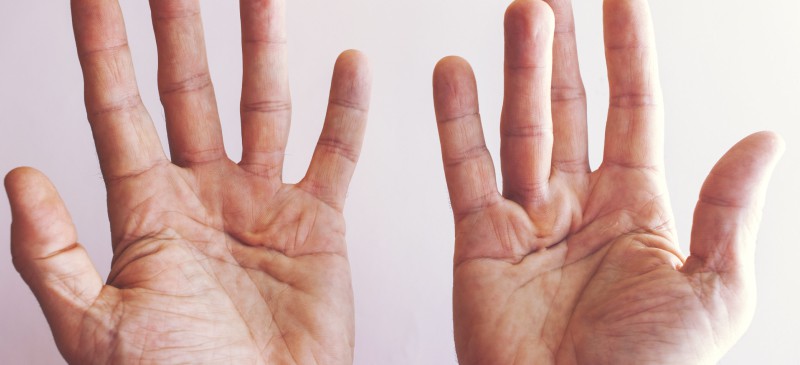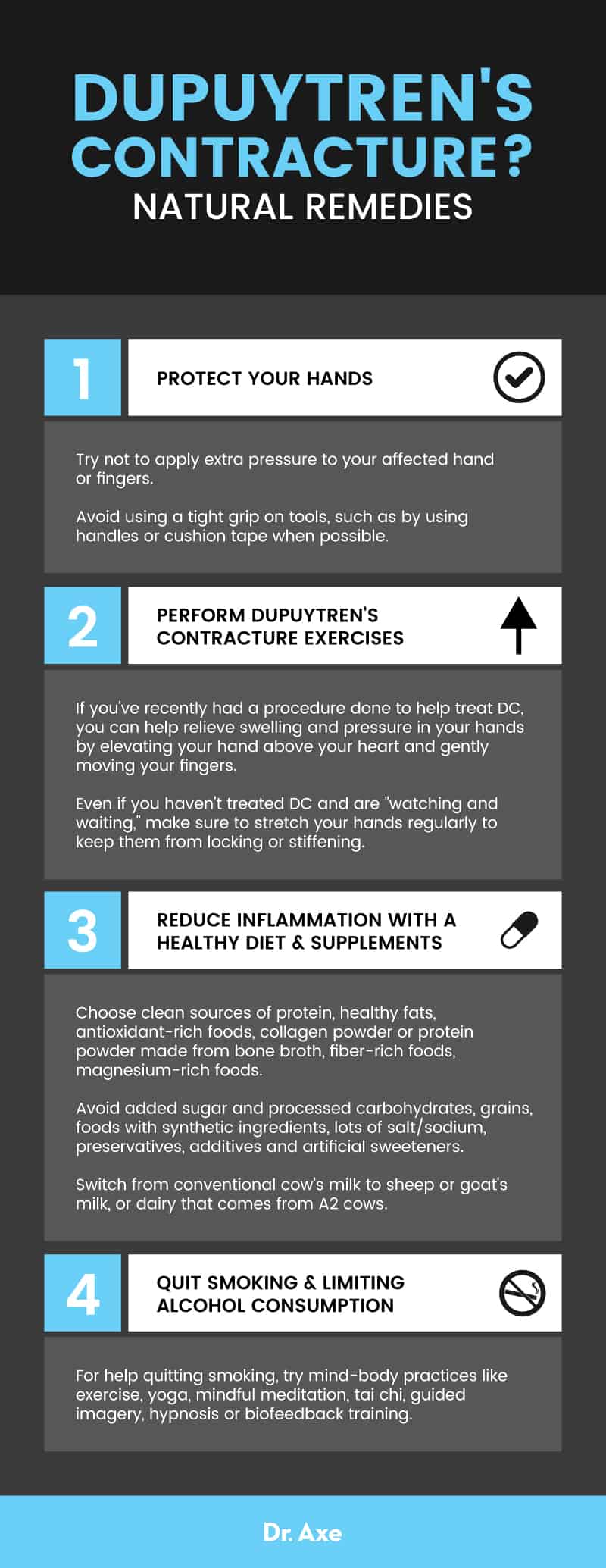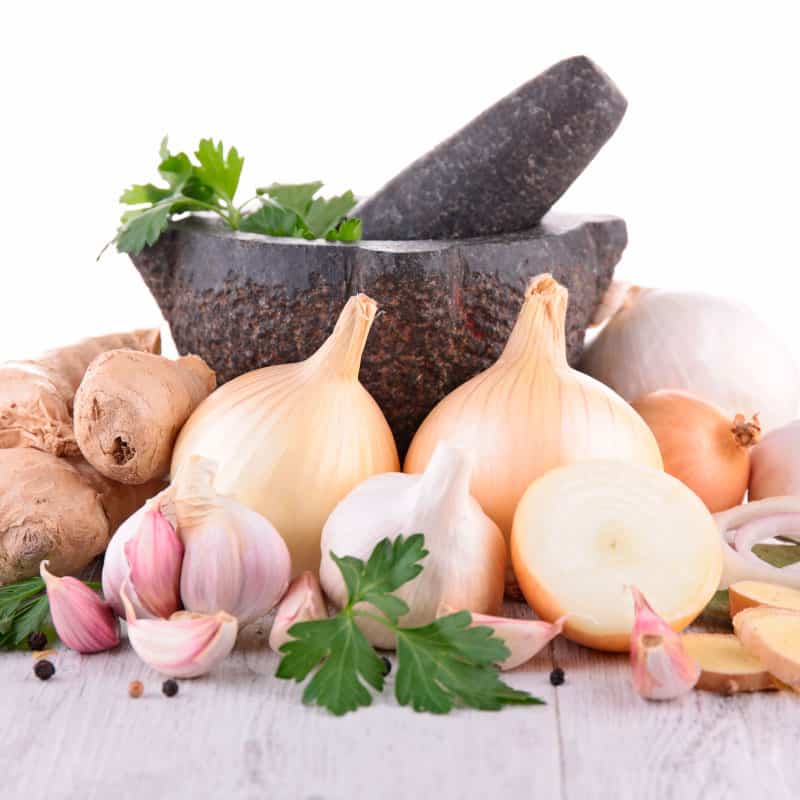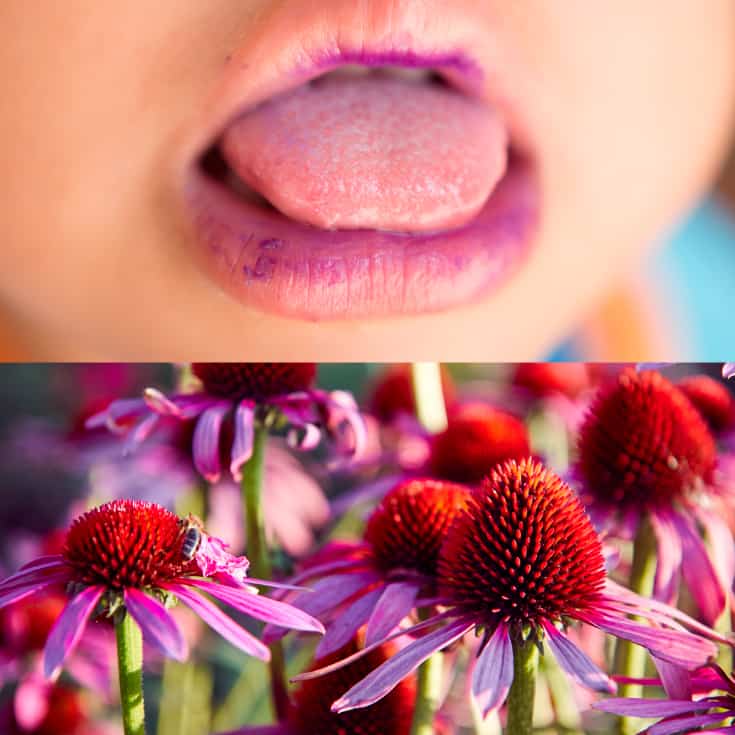This Dr. Axe content is medically reviewed or fact checked to ensure factually accurate information.
With strict editorial sourcing guidelines, we only link to academic research institutions, reputable media sites and, when research is available, medically peer-reviewed studies. Note that the numbers in parentheses (1, 2, etc.) are clickable links to these studies.
The information in our articles is NOT intended to replace a one-on-one relationship with a qualified health care professional and is not intended as medical advice.
This article is based on scientific evidence, written by experts and fact checked by our trained editorial staff. Note that the numbers in parentheses (1, 2, etc.) are clickable links to medically peer-reviewed studies.
Our team includes licensed nutritionists and dietitians, certified health education specialists, as well as certified strength and conditioning specialists, personal trainers and corrective exercise specialists. Our team aims to be not only thorough with its research, but also objective and unbiased.
The information in our articles is NOT intended to replace a one-on-one relationship with a qualified health care professional and is not intended as medical advice.
What Is Dupuytren’s Contracture? Plus, 4 Natural Remedies
September 13, 2018

A contracture is a condition of shortening and hardening muscles, tendons or other connective tissue, which often leads to deformity, rigid joints and sometimes pain or stiffness. (1) In the case of Dupuytren’s contracture (pronounced du-pwe-TRANZ), deformity affects the tissue (fascia) in the hands, leading to symptoms such as permanently bent fingers and thickening of the skin in the palm of the hand.
Can you reverse a contracture? In most cases, yes. A number of treatments are available to help slow the progression of Dupuytren’s contracture and relieve symptoms like bending and stiffness. Doctors typically use treatments such as steroid or enzyme injections, needling or sometimes surgery — but you can also find relief and improve recovery with remedies like hand exercises/physical therapy, essential oils, gentle massage, an anti-inflammatory diet and supplements.
What Is Dupuytren’s Contracture?
Dupuytren’s contracture (DC for short), also called Dupuytren’s Disease Palmar Fibromatosis, describes a hand deformity caused by layers of tissue (fascia) in the palm of the hand hardening and thickening. When someone has DC, tissue below the surface of the skin can form knots, creating a thick cord that may cause one or more fingers to bend and lose flexibility or the ability to straighten. (2)
Dupuytren’s contracture most often occurs in older men, especially those of Northern European descent, such as men who are English, Irish, Scottish, French, Dutch and Scandinavian (Swedish, Norwegian and Finnish). Typically, symptoms come on gradually and get worse with time. It may take several years before symptoms become noticeable enough for you to visit a doctor.
Signs and Symptoms of Dupuytren’s Contracture
Dupuytren’s contracture usually affects only one hand, although some people will develop symptoms in both. The most common Dupuytren’s contracture symptoms are: (3)
- Thickening of the skin on the palm of the hand. This is usually the first symptom to become noticeable.
- Formation of thick cords in the palm that restrict or tether the fingers.
- A puckered or dimpled appearance of the skin covering the palm. Some people will also notice a lump or nodule of firm tissue on their palm.
- Developing bent fingers (usually the ring and pinky fingers, or sometimes the middle finger) and not being able to straighten the affected fingers completely. Only rarely will the whole hand, thumb or index finger be affected.
- Not being able to lay the affected hand down completely on a flat surface.
- Difficulty completing everyday tasks that require fine motor activities and use of the affected hand. As long as the thumb and index finger aren’t bent or affected, then there is usually not a problem with tasks like cooking, writing, etc.; however, severe contractures can limit your ability to fully open your hand, grasp large objects, get your hand into narrow places and do many types of activities.
Can Dupuytren’s contracture be painful? Usually DC causes increased sensitivity, such as discomfort when pushing on any lumps or the palm or stretching the affected fingers, but it is usually not very painful. If symptoms and inflammation become severe, pain may become more prominent.

Dupuytren’s Contracture Causes and Risk Factors
What causes Dupuytren’s contracture? Dupuytren’s contracture develops when cords of thick tissue form under the skin on your palm and extend up to your fingers, sometimes causing your fingers to be pulled down. (4)
It’s not exactly known what causes most cases of Dupuytren’s contracture. Some speculate that injuries of the hands or repetitive movements with the hands may increase someone’s risk, although there isn’t much evidence showing this is true. Essentially anything that increases inflammation (the root of most diseases) can contribute to damaged or diseased fascia in the hands.
Certain risk factors can increase the chances that you’ll develop Dupuytren’s contracture, including:
- Genetic factors and having a family history of Dupuytren’s contracture, such as a parent that dealt with the condition. According to the American Academy of Orthopedic Surgeons, this is the leading contributor to DC. (5)
- Being over the age of 50.
- Being a male, especially of Northern European descent. Men develop DC more often than women, and also tend to have more severe contractures.
- Smoking, using tobacco products and high consumption of alcohol.
- Having diabetes.
- Having certain medical conditions, including epilepsy or seizure disorders.
Is there a connection between Dupuytren’s and trigger finger? Dupuytren contracture shares symptoms with several other conditions that affect the hands, such as trigger finger (stenosing tenosynovitis), carpal tunnel syndrome and ganglion cysts.
Dupuytren’s contracture is different than trigger finger because it usually doesn’t cause pain, although both can cause stiffness, “locking” of fingers and a decreased ability to extend the fingers. (6) Some people can develop both of these conditions and carpal tunnel at the same time, especially people with a history of diabetes. (7)
Dupuytren’s Contracture Diagnosis
Dupuytren’s contracture diagnosis is usually straightforward and doesn’t require much testing, Most of the time a doctor can diagnose a patient with DC by looking at their hand, feeling their palm and fingers and discussing any symptoms or physical limitations with the patient.
If you visit a doctor because you’re concerned about a deformity in your hand, your doctor will likely perform a physical exam of your hands to compare how each one looks and to check for signs like puckering, lumps, tenderness, pain, tough tissue in your palms, etc. Another part of a physical exam to check for DC is to have a patient lay their affected hand down on a flat surface, which will make it obvious if any fingers are bent.
While Dupuytren’s contracture usually develops in the hands, it can rarely affect the feet. When this happens, it is referred to as Plantar fibromatosis, or Ledderhouse Disease. (7) Dupuytren’s contracture foot symptoms can include tightening of the skin of the foot, itching, stinging sensations, joint pain and growth of lumps/nodules.
What are the causes of Dupuytren’s contracture of the feet? The condition develops when slow-growing nodules form in the medial part of the plantar fascia, although it remains unknown why this occurs in many cases. Treatment options usually include steroid injections, radiotherapy and surgery.
Conventional Dupuytren’s Contracture Treatment
In most cases, Dupuytren’s contracture treatment involves:
- Watch and wait. If your contracture is not severe or painful, you probably don’t need any medical treatment. (7) The condition is not considered dangerous. For many people, it may never progress beyond developing lumps in the palm. Your doctor will probably tell you to keep an eye on symptoms and visit him/her again if they worsen and make it hard to complete everyday tasks. To track the progression of your condition, you can periodically check for any lumps in your hand, bending of your figures and how your hand looks when you lay it flat on a tabletop.
- Needling (also called needle aponeurotomy), which is a technique used to break apart cords of tissue in the hand. Needles will be inserted into the numbed affected area in order to puncture and break apart the cord of tissue that’s contracting your fingers. This might sound painful, but usually it is a quick procedure that requires little time to heal or physical therapy afterwards. You might need to have this procedure done more than once, since contractures can sometimes improve but then get worse again. One downside to needling is that there are some risks involved, such as potentially damaging nerves in the hand.
- Enzyme injections may soften and weaken cords of tissue in the hand. The FDA has approved a type of enzyme injection called collagenase Clostridium histolyticum (Xiaflex) for treatment of Dupuytren’s syndrome. Just like with needling, enzyme injecctions may need to be repeated.
- Steroid injections (corticosteroids) can have anti-inflammatory effects and help to slow the progression of a contracture.
- Surgery may be recommended if a contracture is severe and causing physical limitations. Dupuytren’s contracture surgery is performed to remove the abnormal tissue in your palm, leading to longer-lasting effects than needling or enzyme injections. Dupuytren’s contracture surgeries are called fasciotomy or subtotal palmar fasciectomy. After surgery for DC, physical therapy is usually needed in order to restore functionality in the hand. Surgery does involve some risks including pain, scarring, injury to nerves and/or blood vessels, wound infection, stiffness and loss of sensation. If a patient has to have a skin graft to cover a part of their hand where tissue was removed, the recovery will take longer and will likely be more uncomfortable.
- Splinting may be used after surgery but should not be done without guidance from a doctor. It won’t reduce the risk of recurrent contracture and should not be done forcefully (such as by tightly trying to straighten the fingers).
4 Natural Remedies for Dupuytren’s Contracture Symptoms and Recovery
1. Protect Your Hands
To keep the condition from progressing, try not to apply extra pressure to your affected hand or fingers. If you’re doing work around your home or for your occupation, avoid using a tight grip on tools, such as by using handles or cushion tape when possible. Try to wear cushioning gloves with heavy padding during heavy grasping tasks.
If you notice that your hands feel worse after doing certain types of exercises, such as when using exercise bands or lifting weights, consider stopping or get your doctor’s advice about what types of exercises are safer. You can also reduce pressure in your hands by wearing padded weightlifting gloves that cushion the palms when lifting anything heavy, doing bodyweight exercises or doing yoga.
If you do develop some tenderness or discomfort in your hands after you’ve been using them repeatedly, try applying a warm compress to your hands (such as a heated towel) to reduce any swelling. Then apply peppermint essential oil to help keep inflammation under control.

2. Perform Dupuytren’s Contracture Exercises
If you’ve recently had a procedure done to help treat DC, you can help relieve swelling and pressure in your hands by elevating your hand above your heart and gently moving your fingers. Even if you haven’t treated DC and are “watching and waiting,” make sure to stretch your hands regularly to keep them from locking or stiffening.
Dupuytren’s contracture exercises and physical therapy are recommended to reduce swelling and stiffness as well as improve functionality and strength in the affected hand. For help getting started with appropriate exercises, visit a physical therapist or hand therapist to make sure you perform the exercises correctly. Your therapist might also recommend you wear a splint while you’re recovering in order to stabilize your hands.
At home you can practice these Dupuytren’s contracture exercises to improve your flexibility and keep your hands from becoming swollen or painful: (7, 6, 8)
- Gently (not forcefully) straighten the affected finger 10 times using your opposite hand, holding for five to 10 seconds. Repeat the exercise four times a day.
- Lay your affected hand down on a flat surface. Raise each finger up one at a time and hold for five seconds, then repeat 10 times. Repeat this exercise ideally three to four times a day. Do the same thing as you lift one finger up at a time and move it side to side for about 10 seconds.
- Make a fist with your affected hand as you bend the top two joints back toward your palm. Then arch your knuckles back toward the top of your hand. Repeat this 10 times, several times per day.
- Place your hands against each other with the fingers stretched and the tips touching, try pushing the palms together and stretching back one fingertip at a time for 10 seconds.
- Place your hand on a flat tabletop, then lift the palm off the table while keeping your fingers on the table. Repeat five to 10 times.
- With your hand flat on a table, try to spread your fingers as wide as they’ll go. Move each finger toward the thumb, then the other way toward the little finger.
- Hold your hand up. Make the thumb touch the tip of each finger, creating a circle of the finger and thumb.
- Spend about five minutes or more per day gently massaging the palm of the hand and the forearm. You can also speak to your therapist or doctor about whether acupuncture, hot wax treatments and reflexology can help to reverse the progression of your condition.
3. Reduce Inflammation With a Healthy Diet and Supplements
An anti-inflammatory diet may help keep tissue/fascia healthy as you get older. Eating a nutrient-dense diet is especially important if you have a medical condition like diabetes, arthritis or an autoimmune disease that is contributing to your contracture or pain. An anti-inflammatory or diabetic diet plan includes the following types of healing, whole foods:
- Clean sources of protein, like wild-caught salmon, grass-fed beef, organic chicken and turkey and eggs.
- Healthy fats like coconut oil, olive oil, ghee, grass-fed butter, nuts, seeds and avocados.
- Antioxidant-rich foods like citrus, berries, leafy greens, herbs and spices, sea veggies, green tea and bone broth.
- Collagen powder or protein powder made from bone broth, which can help support the healing of damaged connective tissue.
- Fiber-rich foods like artichokes, green leafy vegetables, cruciferous veggies, berries, nuts and seeds (like chia seeds, flaxseeds, pumpkin seeds, almonds and walnuts).
- Magnesium-rich foods like grass-fed dairy, certain types of nuts and seeds, cocoa, avocado, banana and vegetables like spinach and Swiss chard.
- Stay away from added sugar and processed carbohydrates. You can replace sugar with stevia, a no-calorie natural sweetener.
- You may want to avoid grains, especially gluten-containing grains, white flour products, wheat bread, even whole-grain breads and oatmeal.
- Switch from conventional cow’s milk to sheep or goat’s milk, or dairy that comes from A2 cows.
- Avoid foods with synthetic ingredients, a lot of sodium, preservatives, additives and artificial sweeteners. Large amounts of sodium can worsen fluid retention and increase swelling, so limit your sodium intake from processed, canned, frozen or packaged foods.
Supplements that can help to reduce inflammation include: omega-3 fatty acids, turmeric, vitamin B6 and bromelain, plus essential oils like wintergreen oil and cypress oil.
4. Quit Smoking and Limit Alcohol Consumption
Experts believe smoking/using tobacco products can increase your risk of developing Dupuytren’s contracture because it increases inflammation and leads to microscopic changes within blood vessels and tissue. For help quitting smoking, try mind-body practices like exercise, yoga, mindful meditation, tai chi, guided imagery, hypnosis or biofeedback therapy. You might also want to enroll in a smoking cessation program or talk to your doctor about options that may help curb cravings.
Precautions
Visit an orthopedist, chiropractor or your primary doctor if you notice symptoms like stiffness in one or both hands, a very weak grip, bent fingers or nodules. Treat the condition early to prevent complications and tissue damage that limits functionality. Try to figure out what may be causing your issue to develop. Then, take steps to reduce strain on your hand.
Final Thoughts
- Dupuytren’s contracture causes a hand deformity due to hardening and thickening of layers of tissue (fascia) in the palm of the hand. Tissue below the surface of the skin can form knots, creating a thick cord that can cause one or more fingers to bend and lose the ability to straighten.
- Symptoms of Dupuytren’s contracture typically include: thickening of the skin on the palm of the hand, puckered or dimpled appearance of the skin covering the palm, developing bent fingers (usually the ring and pinky fingers), not being able to lay the affected hand down completely on a flat surface and difficulty completing everyday tasks that require fine motor activities.
- Four natural ways to find relief from Dupuytren’s contracture include: protecting your hands from pressure/straining, exercising and stretching the fingers/hand, eating a healthy diet and taking supplements to help reduce inflammation, quitting smoking and minimizing alcohol consumption.








